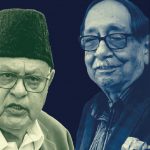SOUTH ASIA HISTORIAN Neeti Nair’s new book, Hurt Sentiments: Secularism and Belonging in South Asia (Harvard University Press; 352 pages; ₹699), explores secularism in the region and its vicissitudes, drawing on archival material and oral histories in the way few people have attempted before. She delves into the now-dominant victimhood narrative among the proponents of Hindutva politics. In the process, she builds on the studies of her predecessors and even questions certain stereotypes that some of them have lapped up. Madurai-born Nair, who was raised in Chennai, teaches South Asian history at the University of Virginia and is a Global Fellow at the Woodrow Wilson International Center for Scholars in Washington DC. An alumnus of St Stephen’s College, Delhi, she is also the author of Changing Homelands: Hindu Politics and the Partition of India. Excerpts:
Why did you write this book?
I intended to write a book that tracked the history of certain sections of the Indian Penal Code (295A and 153A) in India, as well as post-partition Pakistan and Bangladesh. However, Hurt Sentiments emerged out of a growing archive that included such varied sources as the Constituent Assembly Debates of India, Pakistan, and Bangladesh; issues of the Organiser and Mainstream; papers from the Gandhi Murder Trial and the Sahmat archive; and a selection of banned literature, case law, and oral histories.
Tell us about the title, ‘hurt sentiments’.
My original choice for the title was After Partition: Hurt Sentiments and State Ideology in India, Pakistan, and Bangladesh. This was declared opaque and unwieldy, so, along with the marketing team at Harvard University Press, we brainstormed titles until we reached an agreement on the final title.
Islam, unlike most religions, does not have the concept of seeing religion and politics as different. Even the perfunctory Church vs State distinction is absent. How much did that trait of Islam contribute to the formation of Pakistan?
Jinnah did not demand that Pakistan be an “Islamic state”. Insofar as we consider Jinnah as the architect of Pakistan, we must study the politics of Jinnah and I have done so in my book, in some measure. Your question reminds me of this rather counter-intuitive (but true) description of the celebration of independence in India and Pakistan by Tan Tai Yong and Gyanesh Kudaisya in their 2000 book The Aftermath of Partition in South Asia. On the evening of August 14, the famously “secular” Jawaharlal Nehru along with Rajendra Prasad “sat around a holy fire amidst the chanting of hymns, and women marked their forehead with mangal tilak (holy vermillion)… From Tanjore came priests from the Pandarsannidhi of Thiruvadhurai Adhinam who brought ‘holy water’ which they sprinkled on the leaders… It was traditional in Hindu custom to derive power and authority from priests. Nehru yielded to such rituals under pressure from close associates who argued that this was the traditional method of assuming power. The leaders then proceeded to the Constituent Assembly.” Or, here is an excerpt from an elaborate description given in Time magazine, “One sannyasi carried a scepter of gold, five feet long, two inches thick. He sprinkled Nehru with holy water from Tanjore and drew a streak in sacred ash across Nehru’s forehead. Then he wrapped Nehru in the pithambaram [translated as ‘cloth of God’ in the magazine] and handed him the golden sceptre. He also gave Nehru some cooked rice which had been offered that very morning to the dancing god Nataraja in south India, then flown by plane to Delhi.”
As for Pakistan, although prime minister designate Liaquat Ali Khan declared that their independence day, 14 August, was especially auspicious because it fell on Jumat-ul-Wida or the last Friday in Ramazan, and Radio Pakistan broadcast a recitation from the Quran at one minute past midnight, governor-general Jinnah marked the day with a short ceremony wherein “he reiterated that the tradition of tolerance and goodwill among the Muslims went back to the days of the Prophet himself.” Time magazine noted that “it was a formal, cut-and-dried affair. Although Pakistan is frankly a Moslem state (the most populous in the world), and set up to satisfy Moslem demands, there was none of the atmosphere of religious dedication that marked Delhi ceremonies.”
I have dwelt on these two descriptions of how Nehru and Jinnah “performed” at the founding of their respective states to suggest that we (and Time) might consider how our preconceived misconceptions about what Islam is, or Pakistan was meant to be, colour/ed our view of the not-so-distant past in both India and Pakistan.
Rather than appreciating an opposition as necessary and integral for a healthy democracy, the Indira Gandhi-led Congress felt threatened by it. The Congress’ inability to share power, in the spirit of federalism, has been a longstanding problem, says Neeti Nair, historian
Share this on 

How influential has victimhood politics become in India?
The RSS has been particularly successful in weaving a narrative of Hindu victimhood in India, a Hindu-majority country. This is the product of decades of investment in a certain kind of education in shakhas, as NKP Salve and Vasant Sathe argued so powerfully in the Lok Sabha in 1972 and that I narrate in the book. The RSS propaganda that the Congress alone is responsible for the vivisection of Mother India has helped further this narrative of Hindu neglect, as have key Congress missteps such as their decision to appease a section of Muslim conservative men during the Shah Bano controversy. I also argue in the book that as far as censorship is concerned, the banning of the Satanic Verses was a turning point in India because it inspired extremists among the Hindu Right to argue for the banning of books and art that they insisted hurt Hindu sentiments.
In retrospect, whom will you blame for Partition?
Scholars such as Joya Chatterji have done some interesting research on this, but perhaps we need to reframe the question, so it isn’t so much about blame for the final partition of 1947 but a better understanding of the processes that led to increasing antagonism and the eventual separation in 1947. By this I mean that we turn to the speeches and writings of extremist leaders in the decade preceding 1947. What is it about Savarkar’s speeches as president of the Hindu Mahasabha that so inspired Hindus—especially in Muslim-majority provinces and states such as Bengal, Punjab, and Jammu and Kashmir? What was the Hindu Mahasabha leader Bhai Parmanand thinking when he wrote that Hindus and Muslims constitute two separate nations in his book The Hindu National Movement that was published out of Lahore in 1929? How would Muslims respond to this unequivocal repudiation of shared living from the mouths of increasingly popular Hindu leaders? Who kept the cauldron of rival supremacist ideologies boiling in that final decade? There were extremists of all religious communities sloganeering and mobilising at the time. Words can be hurtful, polarising speech from popular leaders have consequences, and obviously this is as true for our present moment as it was for mid-20th century India.
Muslim appeasement, which you highlight as the crime over which Godse killed Gandhi, “forms the bedrock of the BJP’s ideology today”, you argue. Doesn’t it bypass the rational side of people?
Hindutva supporters, graduates of WhatsApp universities and avid consumers of sketchy histories, inhabit an echo chamber, and an “alternative reality”, if you will. Several decades of propaganda is now bearing fruit. But the Congress’s own espousal of soft Hindutva, especially in the 1980s, served to strengthen Hindutva discourse, not clarify its own politics. If Rajiv Gandhi could include a temple to Ram in Ayodhya in his election manifesto, and thereby seek to appease Hindu voters, what was the big difference between the BJP and the Congress?
You quote in the book an interruption by Indira Gandhi in the Lok Sabha in 1970 following multiple riots across India to a speech by Vajpayee. How did she change after that?
The Congress in the decades before independence had evolved into an umbrella organisation that included all shades of political opinion. The essentially fuzzy ideological character of the Congress party led it to regard the rise of regional parties such as the Telugu Desam Party or the (sometimes) popular National Conference as threats to its power. Rather than appreciating an opposition as necessary and integral for a healthy democracy, the Indira Gandhi-led Congress felt threatened by it. The Congress’ inability to share power, in the spirit of federalism, has been a longstanding problem. When Indira Gandhi faced the possibility of electoral defeat in Punjab at the hands of the Akali Dal, for instance, she created and stoked a figure like Bhindranwale. So, her turn to communalism after 1980 may be seen as part of a longer strategy of appeasing and cultivating the “natural” Hindu majority as her electoral base, and “managing” the rise of regional parties.
What is happening to the idea of secularism in India? Is it falling prey to a certain Hindu assertion or a phenomenon that Ashis Nandy had famously called ‘the Abrahamisation’ of Hinduism?
As a historian, I find the work of Ashis Nandy static and stereotyping; it does not help us understand how secularism has evolved and grown roots in independent India. The claim that “India’s westernised intellectuals have consciously opted for the abolition of religion from the public sphere” is inaccurate, I am afraid, as I show in my recent book. I find the category of “Westernised middle classes” unproductive to think with because I see this category as internally differentiated along several axes. As a historian of partition and communal violence I find the quest for “tolerance” in “non-modern” or small-town India implausible and quaint. However, Nandy’s elaboration of the Abrahamisation of Hinduism that is “Hindutva”, a process that has also been discussed by scholars of the census and religious revivalist movements of the mid-late 19th century, is helpful. The everyday secularism of the ordinary Indian is responding to massive changes in the power of Hindu organisations that are now closely tied to the machinery of the state as well as civil society networks such as some Resident Welfare Associations and alumni groups. However, this secularism, revealed in everyday acts of friendship across religious lines, is sadly unaided by other powerful “checks and balances” of the Indian state. This is not a fight among equals, but that of David against Goliath.
It is far too easy to blame Cold War dynamics for the placement of India and Pakistan in rival blocs, and Pakistan’s subsequent hurtling into chaos. We might be better served in understanding how domestic politics drives, and has always driven, foreign relations especially in our immediate neighbourhood, says Neeti Nair
Share this on 

Pakistan is in chaos in multiple ways. Was its destiny foretold?
As a historian, I try to eschew the use of the words ‘foretold’ and ‘inevitable’. It is our task to explain how things fall apart or come together. Certainly, Pakistan began on a weak footing, on the verge of bankruptcy in early 1948. But let us not forget that it was India’s war-posturing on the borders of Pakistan in early 1950 that led Liaquat Ali Khan to reckon with Pakistan’s military unpreparedness and request US military assistance. This is a detail from Srinath Raghavan’s War and Peace in Modern India that is worthy of further examination. It is far too easy to blame Cold War dynamics for the placement of India and Pakistan in rival blocs, and Pakistan’s subsequent hurtling into chaos. We might be better served in understanding how domestic politics drives, and has always driven, foreign relations, especially in our immediate neighbourhood.
What explains the growing efforts to present VD Savarkar as an iconic freedom fighter notwithstanding his chequered political career that brought him closer to the British Empire, after his release from the Cellular Jail?
Chequered is true. I would urge a close reading of Vinayak Chaturvedi’s new book Hindutva and Violence: VD Savarkar and the Politics of History. Part 1, especially, deals with his storied past as an anticolonial revolutionary. Savarkar’s admittedly dismal anticolonial track record after he was released from Cellular Jail cannot erase that prior revolutionary past. It is futile to harp on one set of petitions he wrote to the British seeking his release when there is so much else in the record to grapple with.

/wp-content/uploads/2023/04/NeetiNair1.jpg)

/wp-content/uploads/2025/07/Cover_Dalai-Lama.jpg)














More Columns
From Entertainment to Baiting Scammers, The Journey of Two YouTubers Madhavankutty Pillai
Siddaramaiah Suggests Vaccine Link in Hassan Deaths, Scientists Push Back Open
‘We build from scratch according to our clients’ requirements and that is the true sense of Make-in-India which we are trying to follow’ Moinak Mitra